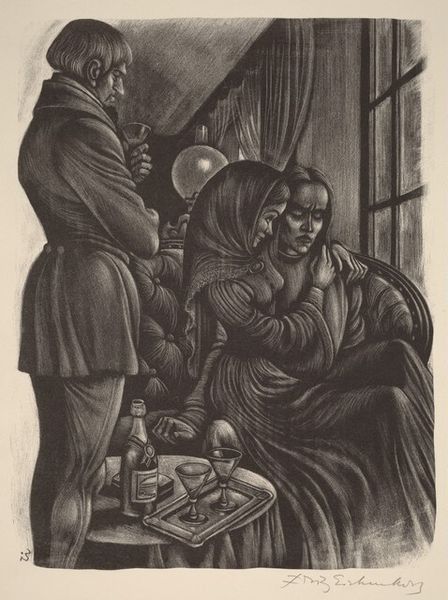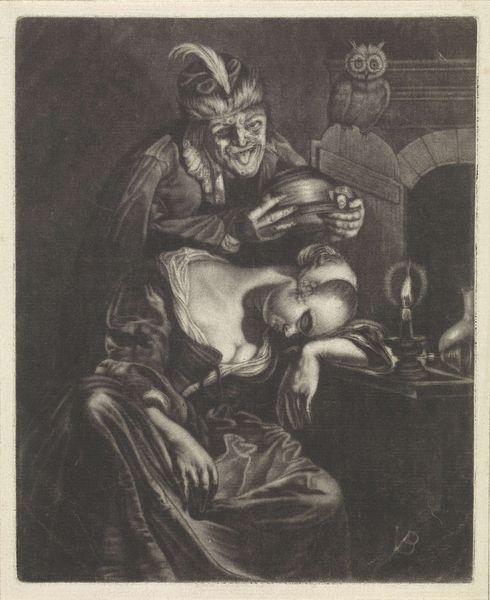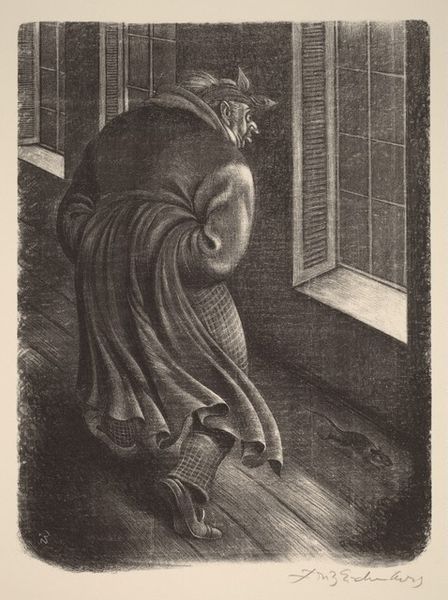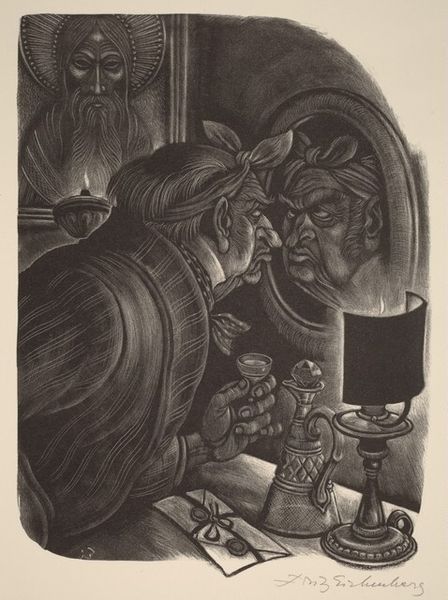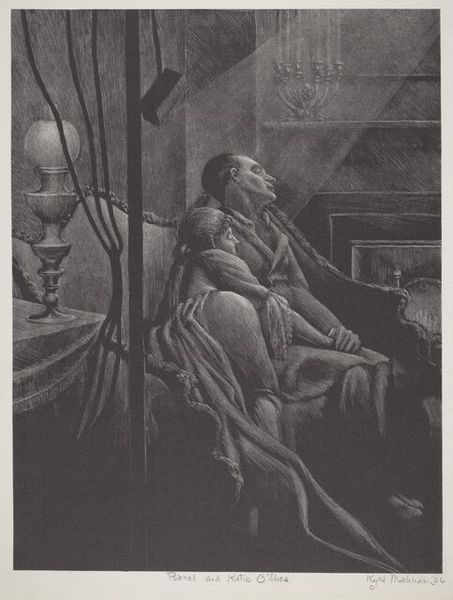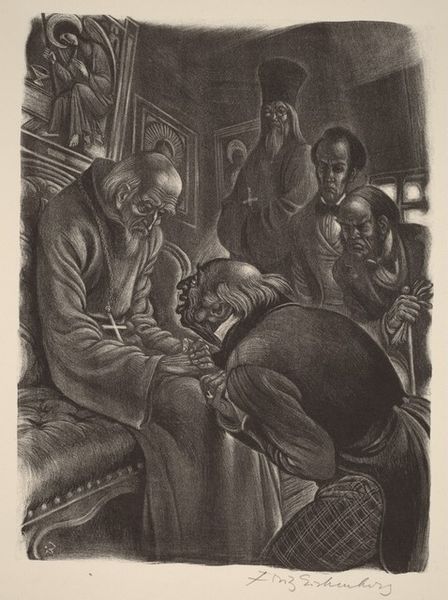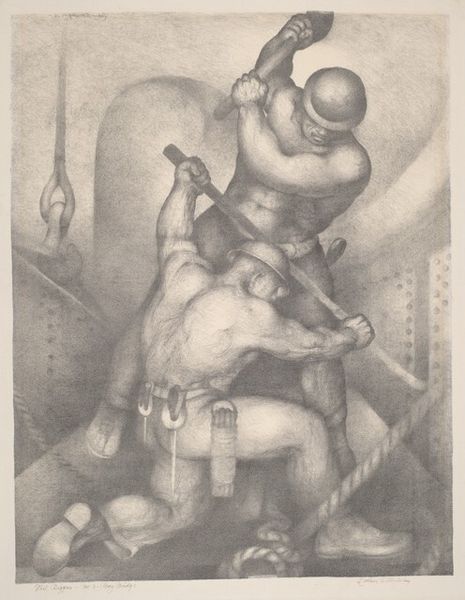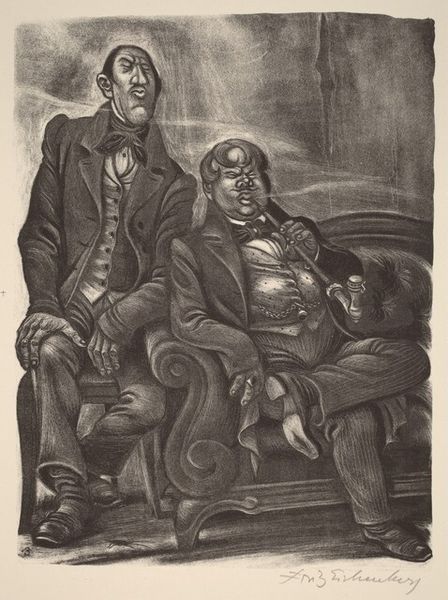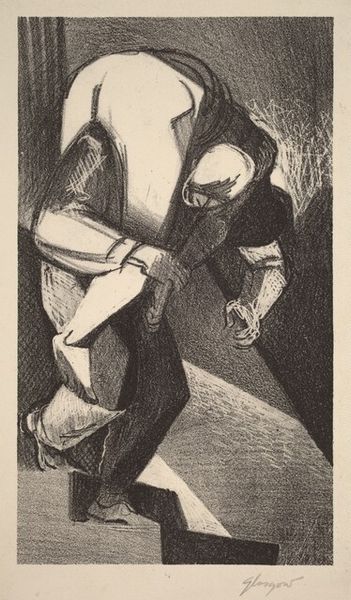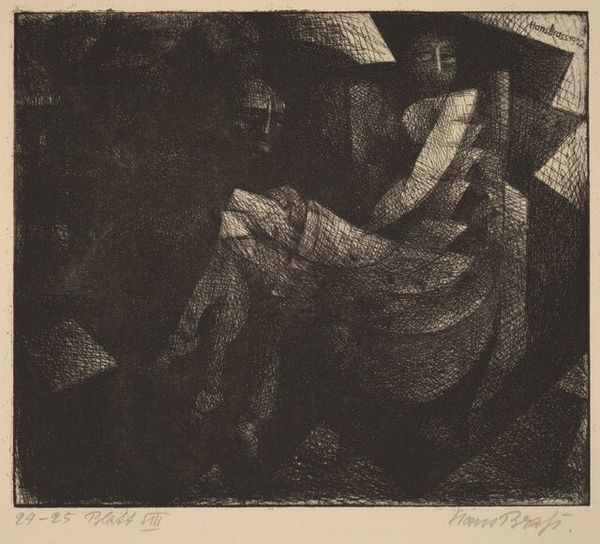
Ivan and the Devil (Book XI: Ivan Fyodorovich, facing p.492) 1949
0:00
0:00
drawing, print, graphite
#
portrait
#
drawing
# print
#
caricature
#
caricature
#
graphite
Copyright: National Gallery of Art: CC0 1.0
Curator: Look, isn't this piece delightfully wicked? This graphite drawing by Fritz Eichenberg is called "Ivan and the Devil," created in 1949, and served as an illustration in Book XI of "The Brothers Karamazov." Editor: My first thought: the devil looks far too comfortable! Slumped in that armchair, swirling his watch chain… there's a domesticity to his evil. Almost…charming? Curator: Domesticity is the crux! Consider how Eichenberg rendered the texture. Notice the precision of the graphite lines; observe the hatching, lending form and depth. And how about his engagement with Dostoevsky’s themes through the lens of mid-20th-century anxieties? The drawing’s a printed illustration, and mass reproduction invites a kind of democratization to the metaphysical conflict. Editor: Exactly, democratization of temptation! And there’s a humorous bend here, isn’t there? I love that the devil’s got this world-weary look, like corrupting Ivan is more of a chore than a thrill. See how that shadow across his face and the carefully shadowed hat next to him only add to the somberness. Curator: Humorous, yet chillingly relevant, especially considering the sociopolitical tensions bubbling just after the war. This isn't some abstract force of darkness but a being weighed down. And look closer still; Eichenberg employs line to emphasize the craft. This emphasizes the tension in Dostoyevsky’s work as the piece takes the form of caricature. A technique employed with an intensity rivaling William Hogarth. Editor: Right, you almost feel sorry for him, and THAT'S where the genius lies! Because even a pathetic devil is still… well, the devil. It makes you question the banality of evil and whether we create the opportunity. That impish grin of the drawing only makes him a great instigator of human folly and drama. Curator: Absolutely. This piece reminds us how moral battles, large and small, get tangled in everyday life—reproduced and circulated in the culture we consume and that consume us. Editor: In the end, you see a bit of yourself reflected in his weary, mischievous eyes. That makes this drawing more than just an illustration; it’s a mirror reflecting our own struggles with doubt and desire. I suspect I will return to examine this one again.
Comments
No comments
Be the first to comment and join the conversation on the ultimate creative platform.
